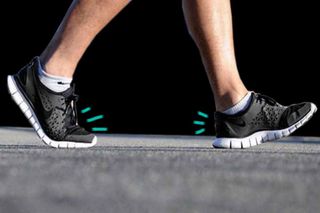
The 10,000 Steps‑a‑Day Challenge Was a Marketing Scam
The health benefits of walking level off at 7,500 daily steps.

In the past decade, walking 10,000 steps a day has been cemented as a rule to ensure good health. Its health benefits have been endorsed by the World Health Organization and the American Heart Foundation, among other prestigious institutions that guide global understanding of health. It’s been the focus of viral online challenges aimed at improving health. It’s been the backbone of wearable fitness tracker sales. The only problem is: there was never any evidence that 10,000 is the magic number for good health. In fact, a new study suggests health benefits may plateau after 7,500 steps a day. So, where did the figure 10,000 come from?
The 10,000-steps-a-day rule came from a mid-1960s marketing campaign for a Japanese pedometer company. “In an attempt to capitalize on the immense popularity of the 1964 Tokyo Olympics, the company Yamasa designed the world’s first wearable step-counter, a device called a manpo-kei, which translates to ‘10,000-step meter,'” reported David Cox for The Guardian last year. A new report in The Atlantic suggests the origin of the rule is even more ludicrous. “Based on conversations she’s had with Japanese researchers,” Amanda Mull writes, I-Min Lee, Ph.D., a Harvard University professor of epidemiology and the lead author of the new study exploring the merit and origin of the number “believes that name was chosen for the product because the character for ‘10,000’ looks sort of like a man walking.” 10,000 written in Japanese kanji is 万.
That the 10,000-step line was arbitrary has been known for some time by experts, even if its purely commercial origins were not. Studies that have been used to support claims of 10,000-steps-a-day health benefits have failed to rule out other daily step amounts. Such research “… might find that 10,000 helps you lose more weight than 5,000 and then the media see it and report: ‘Yes, you should go with 10,000 steps,’ but that could be because the study has only tested two numbers. It didn’t test 8,000, for example, and it didn’t test 12,000,” Catrine Tudor-Locke, Ph.D., of the Center for Personalized Health Monitoring at the University of Massachusetts, Amherst, told Cox in 2018.
Related on The Swaddle:
Even Ten Minutes of Light Exercise Can Boost Your Memory
Lee’s new study, published recently in the Journal of the American Medical Association, sought to address this knowledge gap. She and her team compared the step totals of more than 16,000 elderly American women, against the women’s mortality rates. They found that women whose daily steps totaled 4,400 had “significantly lower mortality rates” than those in the least active group. The women’s mortality rates dropped as their steps increased — until 7,500 steps a day. Beyond 7,500 steps, the difference in mortality rates dropped to nil, suggesting health benefits don’t accrue with more steps. In other words, health gains associated with 7,500 daily steps are likely of the same degree as those achieved by 10,000 steps — the 2,500 additional steps, while certainly not bad for you, aren’t necessarily working any health magic.
Ultimately, Lee told Mull, it’s not about the total so much as the increase; women who increased their daily steps by 2,000 saw health gains, even if they never reached a daily total of 7,500 steps.
“I’m not saying don’t get 10,000 steps. If you can get 10,000 steps, more power to you,” Lee told Mull. “But if you’re someone who’s sedentary, even a very modest increase brings you significant health benefits.”
Liesl Goecker is The Swaddle's managing editor.
Related


‘Why Didn’t They Leave?’ and the Vicious Cycle of Abusive Relationships
